Come and get a little spooky with us in this great Halloween activity that will get your kids moving and ghouling!!! As we prowl like a black cat, float like a ghost, and crawl like a spider in this Halloween themed creative dance class that even the youngest of kids will enjoy!
Great kid and toddler Halloween activities are spooky but not too scary. They allow children to engage in celebrating the holiday whilst also focusing on gross or fine motor skills or learning educational lessons in creative and festive ways.
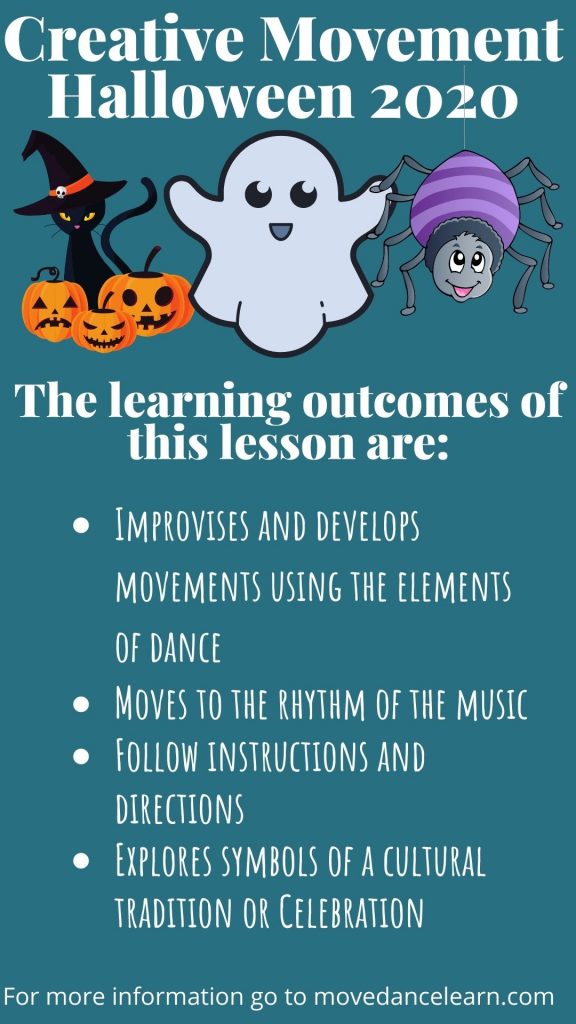
This particular Halloween Activity for kids immerses children in creative dance, moving their bodies and using their imaginations! It is a great indoor activity that allows them to have some “guilt-free” screen time because the video and tutorial keep them engaged, moving, and following the instructions – and even those few who watch rather than dance usually mesmerized by the screen will usually be using their imaginations and learning through watching at the same time!
Halloween Dance Video Tutorial
Click here to go straight to a playlist on Youtube of dance classes by Move Dance Learn. Don’t forget to subscribe to get notifications as the library is growing and should have twenty videos up soon!
Short History Of Halloween for Kids
Halloween was first celebrated by the Celts who lived in Britain and Ireland during medieval times. They called it Samhain and believed on the night of the 31st of October that the lines between the world of the living and the dead became most blurred, as this was the day their year ended and a new one began.
On this night they would light bonfires, decorate trees and their homes with offerings to pacify the spirits, wear animal heads and skins as costumes to ward off any ghosts, and tell tales or each other’s fortunes.
When the Christians took over the British Isles they brought with them their own celebration – All Saints Day. Samhain being a pagan celebration was demolished, but All Hallows Eve, the day before All Saints Day was born instead.
When Irish and English immigrants came to the United States, they brought with them their tradition of celebrating All Hallows Eve and although it has changed over time the spirit of the holiday remains – to spook and scare.
Halloween Symbols and Meanings
This Halloween Dance Tutorial is based around some symbols of Halloween but have you ever wondered why these particular animals and things are linked to Halloween? Wouldn’t it be nice to be able to explain it to your kids? Well now you can as I go through a list of all the different symbols for Halloween with a short history or meaning guide behind them – relax and know this info has been well researched, I was a teacher and told this stuff to kids in classrooms…. so let’s begin with the ones in the dance tutorial.
Black Cats
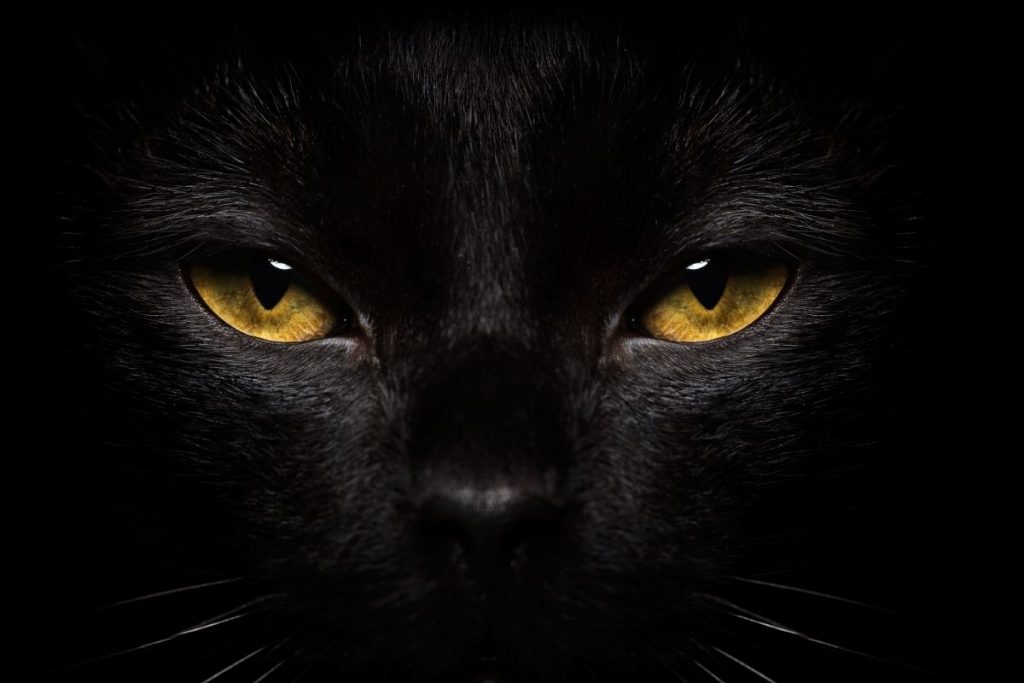
Black cats have long been thought to bring upon those people who are superstitious – bad luck. To have one walk across your path, in particular from left to right, by many even today is thought to be an omen of bad news. This superstition began around the middle ages throughout Europe.
When the pilgrims in the US began to actively persecute woman they accused of being witches they also began to link black cats to the craft. Many believed that those they thought practiced witchcraft could shapeshift and turn into a black cat. As witches are also a Halloween symbol as you will read about further on, black cats therefore also became Halloween symbols.
Ghosts and Ghouls
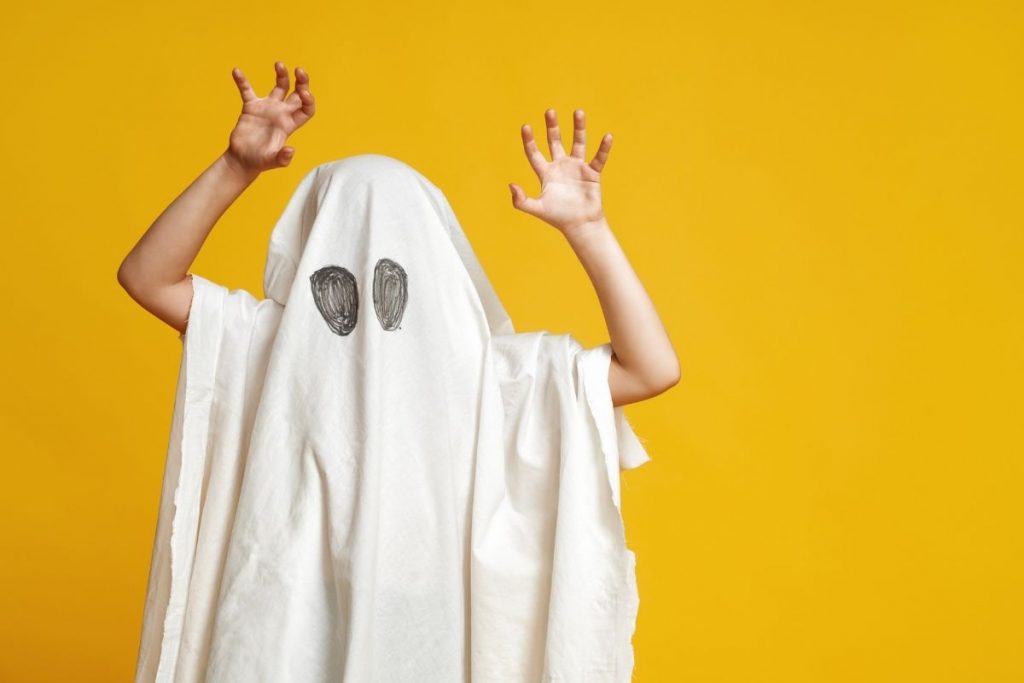
Historians tell us that Halloween originates from a Celtic festival where people would light huge bonfires, wear animal masks and costumes to scare away ghosts. November 1st marked the end of Summer and the time when shorter days meant more darkness, cold winters, and ultimately more deaths. The Celts believed on the eve before this change that it was possible for the worlds of the living and the dead to cross. They thought that the damage to their crops during the winter months or troubles they got into were caused by spirits whom they also believed gave their priests special insights into the future.
At a time when science could not tell them otherwise, this festival and tradition helped give them some feeling of control or that they tried their best to stop evil from descending over them especially during the long winter ahead of them.
Spiders and Spider Webs
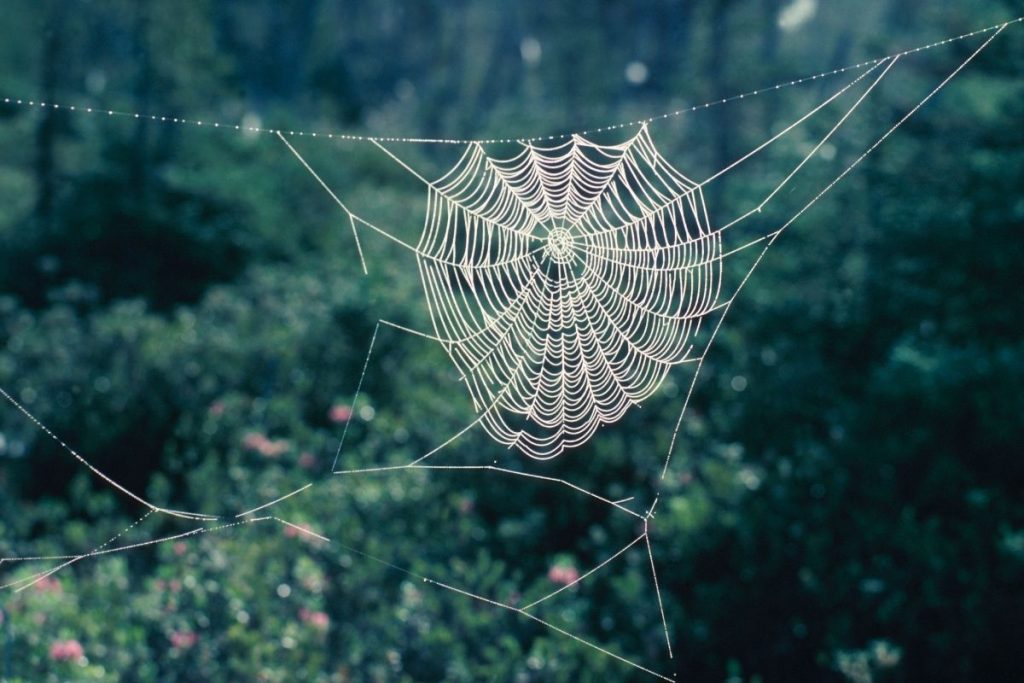
Spiders are again linked closely to witches and therefore used as a symbol of Halloween. Spiders have a mythological history of being known as fortune tellers because of their ability to weave a web. This skill has been connected to being able to weave knowledge of the future and people’s fortunes which would be a very handy talent for a witch.
We also connect spiders and webs to Halloween because we usually find them in abundance in old and unused houses or attics and basements where stories about ghosts and spirits other Halloween symbols usually abound!
Witches, Broomsticks & Cauldrons
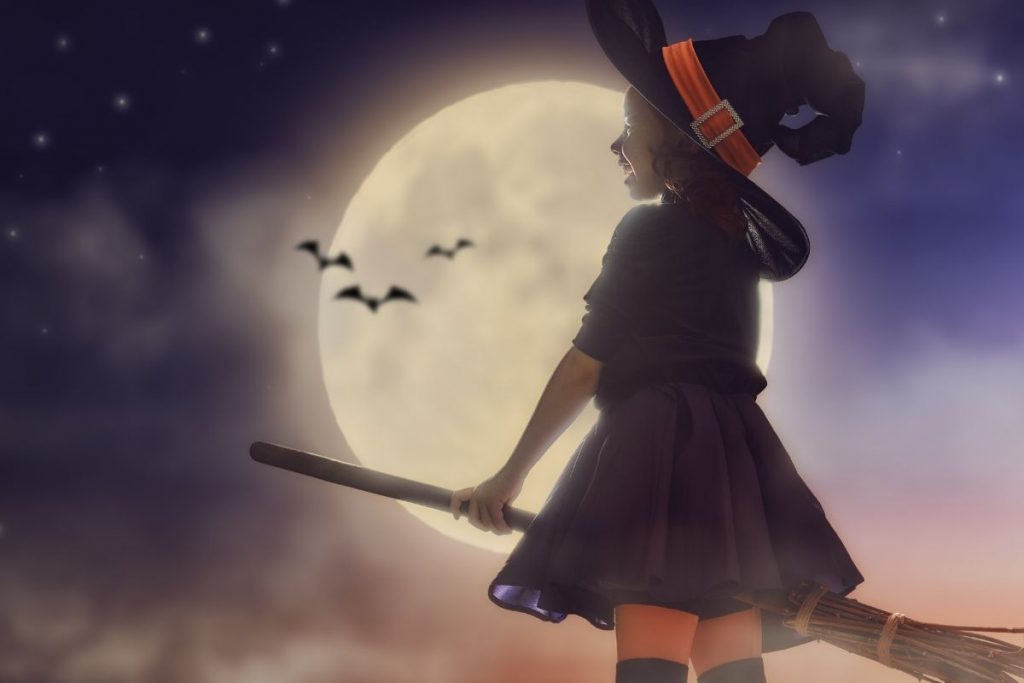
The caricature of a witch as we know it today was born from a very different role for a woman during medieval times. In fact, witches were healers during a time when very little was known on how to heal sickness and relieve pain. Many wise, sage women learned the art of using herbs and remedies to aid the sick, help birth children, and more. But overtime during the 14, 15, and 1600’s suspicion generally from the church of their knowledge, skills, and abilities turned into fear and accusations of devil worship and of being anti-christian. These crimes apparently made it permissible to torture and kill them in public – a practice done mainly to scare the public and cast out more fear and build the hysteria that continues even to this day.
Broomsticks are associated with witches because the early healers would carry them, not to fly on but to help clean and clear areas before healing would be performed. Where the tales of the healers actually flying on these broomsticks came from is not known, but with the hysteria surrounding them at the time – nearly any tale that was made up was thought to be true.
Cauldrons or cooking pots as they really would have been known as were also regularly carried by the healers to enable them to grind and pulvinate their herbs and brew up their healing medicines.
As to why the caricature of a witch became that of a hideous old woman, with a crooked nose, warts and sometimes green skin…. well that comes down to the smouldering crockpot of imaginative stories concocted over the hundreds of years since the beginning of the witch hunts and persecutions.
And lastly, just why is a witch such a prominent symbol of Halloween? Well the purpose of Halloween is to scare of the dead spirits and throughout history people were scared into believing that witches were to be feared, so who else is best to ward off the the dark spirits? But it is also because of the belief that on All Hallows Eve, the 31st of October, the spirit world and earthly worlds are blurred and so when else could the best stories have been made to scare and put fear into people, then to see witches out practicing their devil worship on the night when the living and the dead converge.
Bats
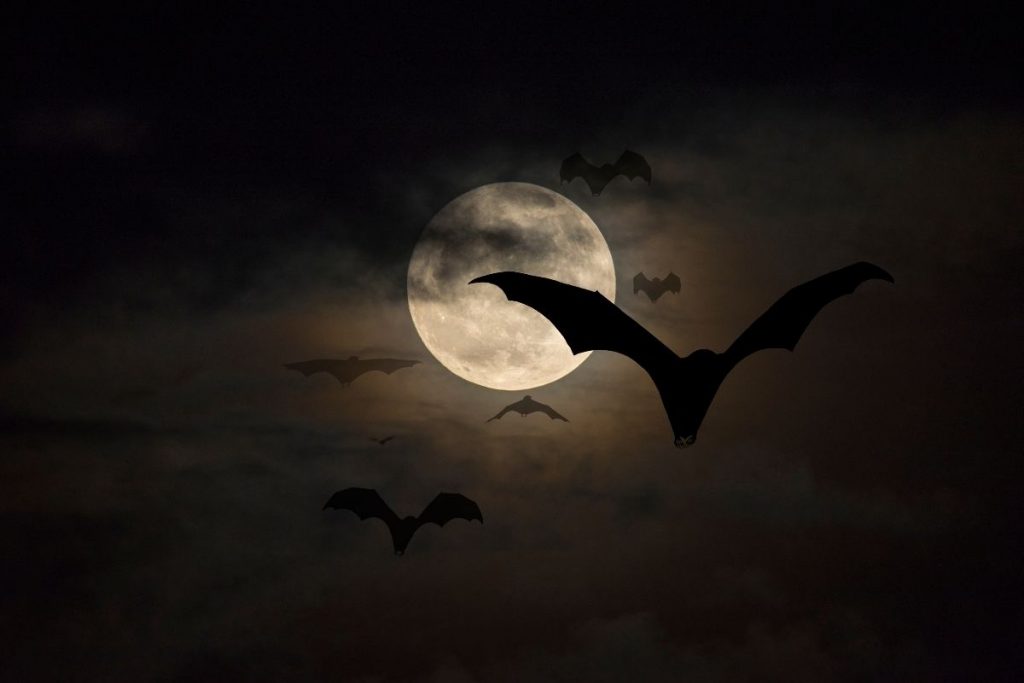
The Bat has become a symbol for Halloween because of a culmination of many different connections and links to other symbols on this list.
Witches were thought to use bats blood in their potions to help them fly. Bats are nocturnal animals coming out at night which is related to death and darkness, the time when ghosts and ghouls are most likely to be seen. Bats like hiding in caves and dark places including old abandoned houses, basements, and attics full of spiders and webs. Bram Stoker in his notorious tales wrote that vampires could turn into bats. Bats as a species are both a bird and mammal-like – they are in between – and this association is similar to the belief by the early Celts that on All Hallows Eve the world became it’s closest to being in between life and death. It has also been theorized that the Celtic immigrants who came to America began to associate the animals to their All Hallows Eve or Samhain celebrations because their migration pattern is to fly south for the winter is during October-November and the animal was more prominently spotted.
Pumpkins and Jack-O-Lanterns
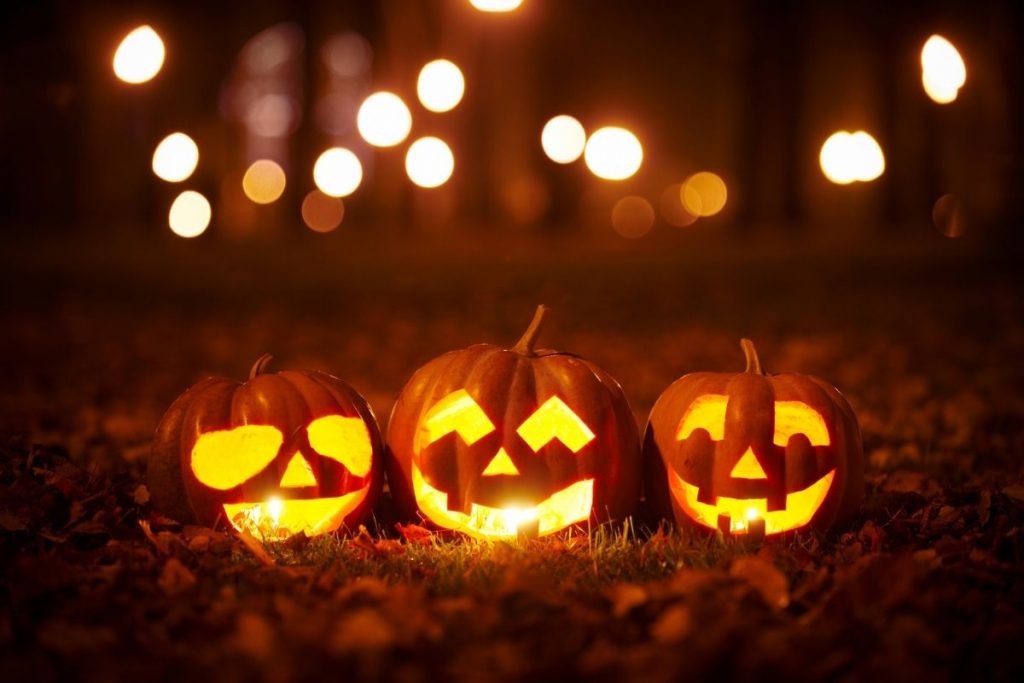
The tradition of decorating with pumpkins and carving faces into them is an Irish tradition. Turnips and potatoes were originally used until Irish immigrants came to the United States and began to use pumpkins (a fruit that is native to America) which were perfect to gut out and carve and use as a lantern.
The Irish would originally place their carved turnips and potatoes on their window sills and near entrances to scare away spirits, in particular the spirit of Stingy Jack – where the name Jack-O-Lantern comes from.
The story of Stingy Jack was that he was an unsavoury man who asked the devil to have a drink with him. Unwilling to pay for the drink, Jack tricked the devil into turning into a coin, but rather than use it he placed in in his pocket next to a silver cross so the devil could not transform back. Overtime Jack freed the devil on the condition that if he were to die, the devil would not take his soul and would not bother Jack for a year. When the year passed Jack somehow again tricked the Devil into a tree, climbing for fruit. Jack quickly etched a cross into the trunk ensuring the Devil became stuck up there until Jack made the Devil promise to not bother him for ten more years.
Jack died soon after this, but for his unscrupulous acts on earth was not allowed into heaven. In his spirit form, jack longed for a place to stay and so went to the devil but the devil too turned him away because of the promise made to not take Jacks soul. As it was night, jack asked for something to light his way on earth and the devil threw him a coal which Jack stuck into the turnip he was eating, left to wonder the earth for eternity.
Scarecrows
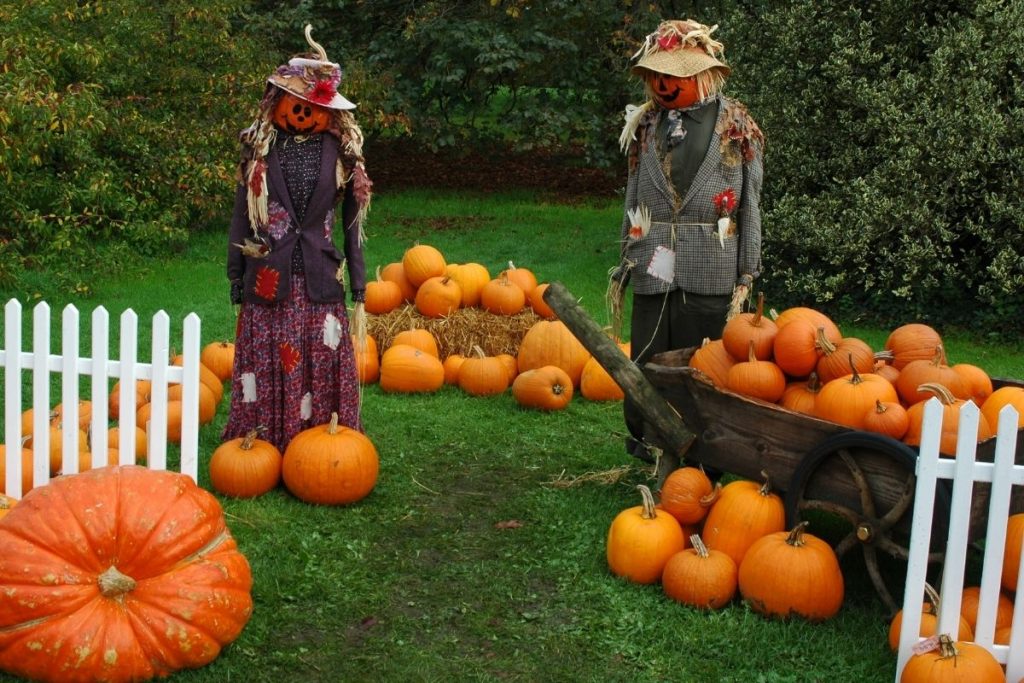
Scarecrows are a symbol of harvest which happens around the time of Halloween. They are used to scare away crows and other pests and so can be seen to have a similar purpose on Halloween – to scare off spirits and evil. Being a sign of harvest they are also a symbol for thanksgiving celebrations which occur in November and so many people when decorating for fall will include them in their decor. Scarecrows are also an old favorite for a costume choice during Halloween.
Corn Husks
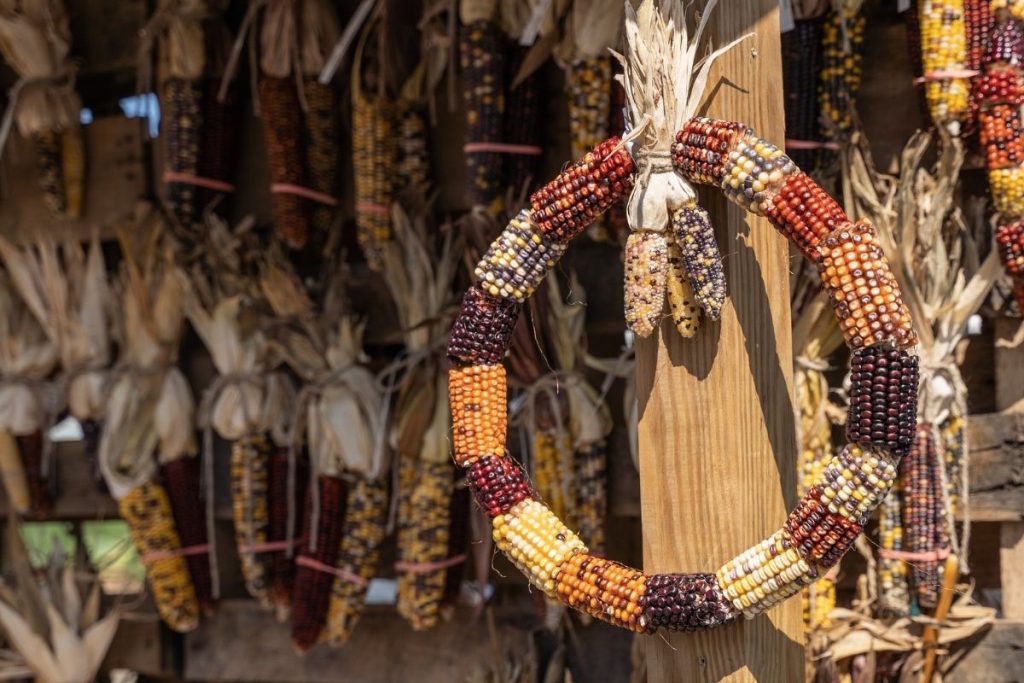
Corn husks damaged or too dry to eat from a harvest have traditionally been used to create autumnal wreaths, thanks giving decorations and other decor to celebrate the harvest. Because of their connection to this time of year they have gradually made their place in Halloween decorating as well. Add to that the creation of candied corn in the 1950’s by candy companies to be handed out to trick or treaters, corn and corn husks have become a staple symbol of Halloween.
Apples
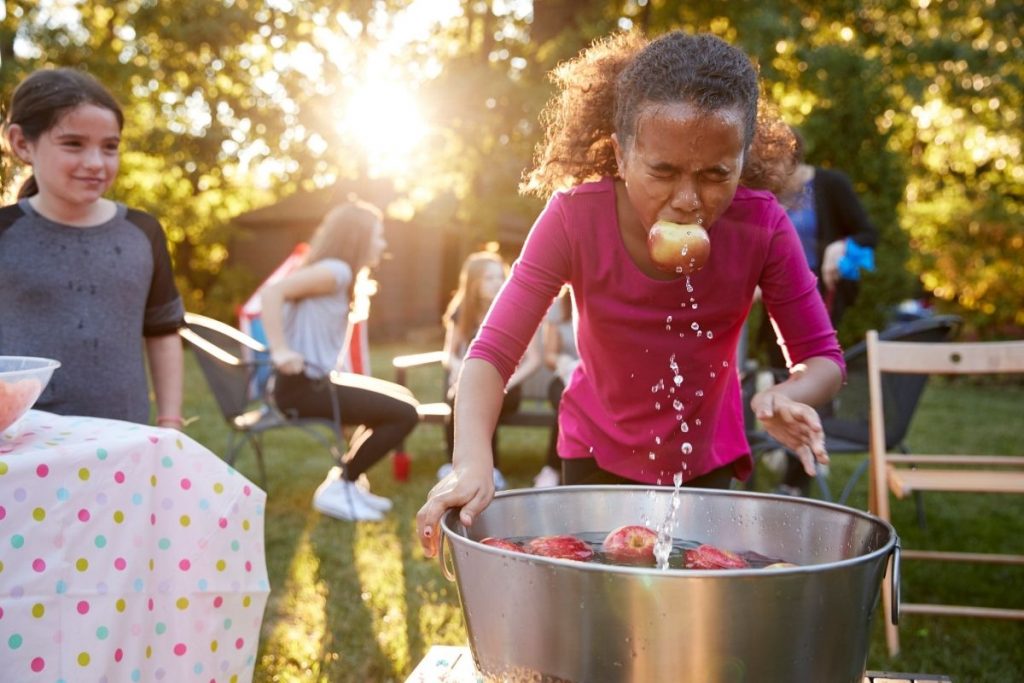
Apples are ripe and ready for harvest during Autumn and so because of their abundance at this time of year gradually became linked also to Halloween, in particular the Halloween game of Bobbing for apples. The game was thought to have originated from the Roman custom of young people trying to take a bite from an apple floating in water or hanging from a string. The first to be successful was the next allowed to be married. When the Romans invaded Britain they brought with them the apple tree and their celebrations and customs were mixed with the Celtic traditions and festivals. It is also thought that apples were used to decorate trees as gifts to the Gods during All Hallows Eve or Samhain celebrations cementing the history of the apple to Halloween even tighter.
Skeletons
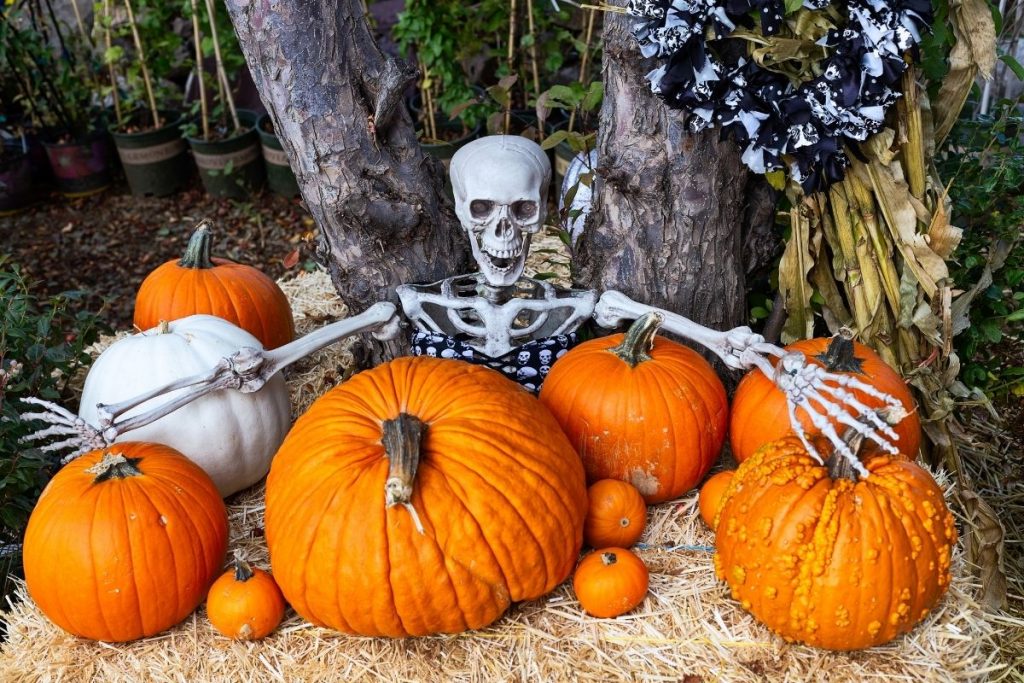
Samhain as written about for other symbols in this list and All Hallows Eve was the night in Celtic Culture when the living and dead were most likely to cross paths. Therefore not only could you come across a ghost or ghoul, but even perhaps the remains of the dead – their bones. Skeletons are a symbol of death and have a very prominent place in Halloween celebrations all over the world.
Sugar Skull
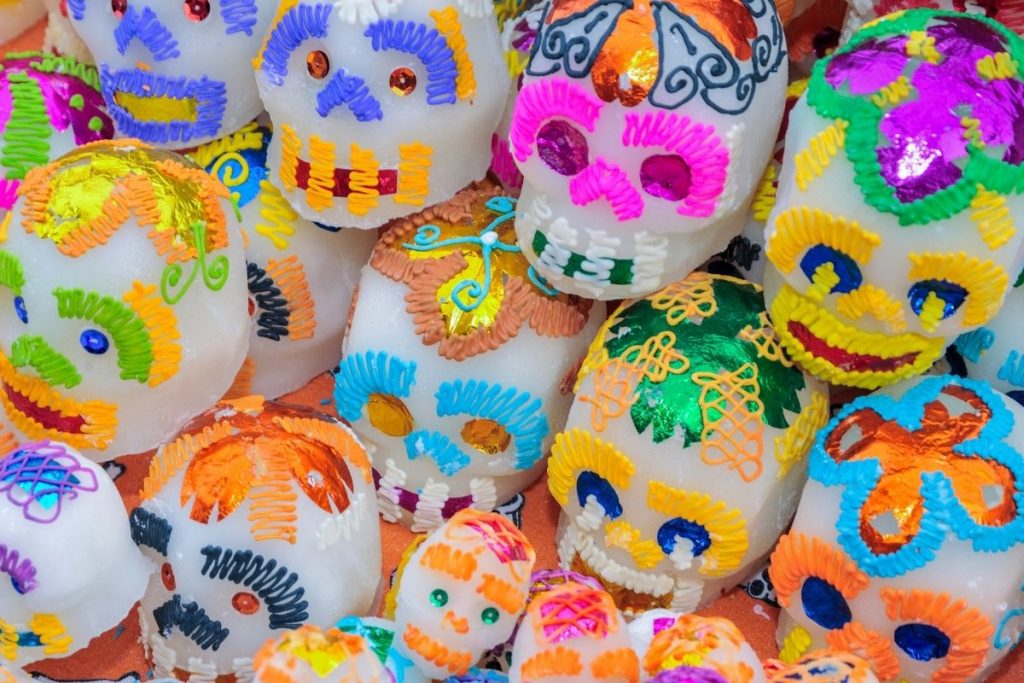
As more awareness of the Mexican tradition of Dia De Los Muertos has occurred so has the association of the sugar skull and Halloween. But it should be noted that Dia De Los Muertos or the day of the dead which is co-incidentally celebrated right after Halloween on November 1st and 2nd do not have the same origins.
The Day of the Dead has been celebrated in much of Latin America for almost 3000 years. It is not a time to scare away evil, but a day to celebrate the spirits of lost loved ones. On the first day, youth who have been lost are celebrated and on the second it is the adults that are honored. It is believed during this time spirits are allowed to communicate with the living and so people decorate altars for their past loved ones with sugar skulls and other offerings of food and drink. In past Mesoamerican societies, the skulls of prisoners or human sacrifices were placed on an altar as an offering to the Gods and although many traditions thankfully (such as human sacrifice) were abandoned over time, the tradition of the skull offering remained but in a different form.
Costumes
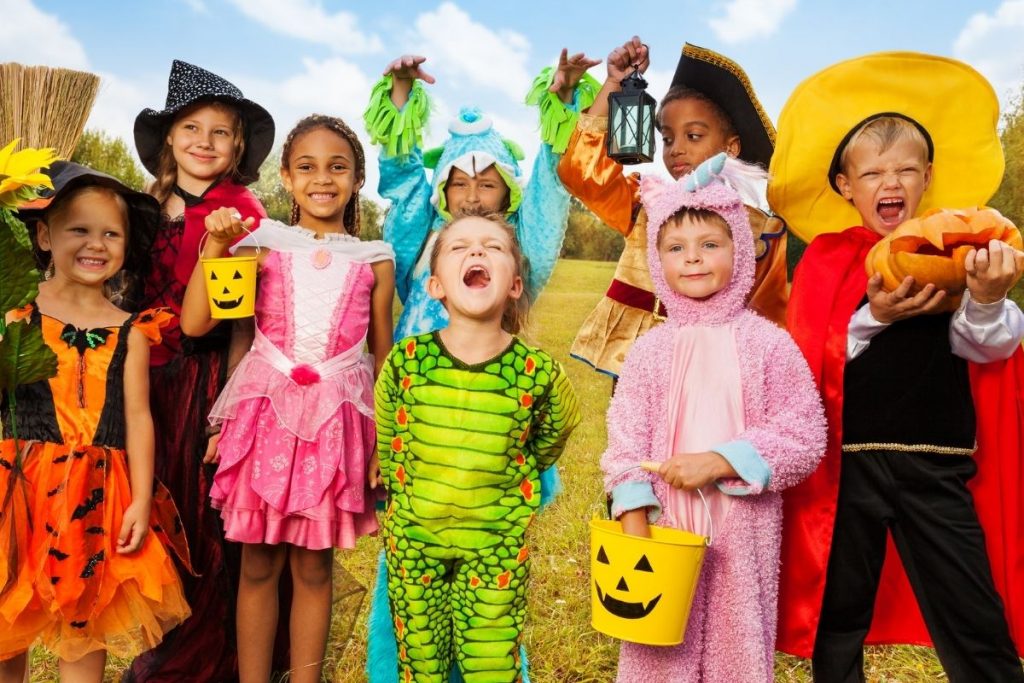
During the original Celtic celebrations of Samhain, people would wear costumes of animal heads and skins. Wearing costumes and masks would mean that you could either trick other spirits and ghosts you encountered into believing that you were actually one of them or altenatively scare and frighten them away! The tradition as we know has carried on today as we know it!
Trick or Treat
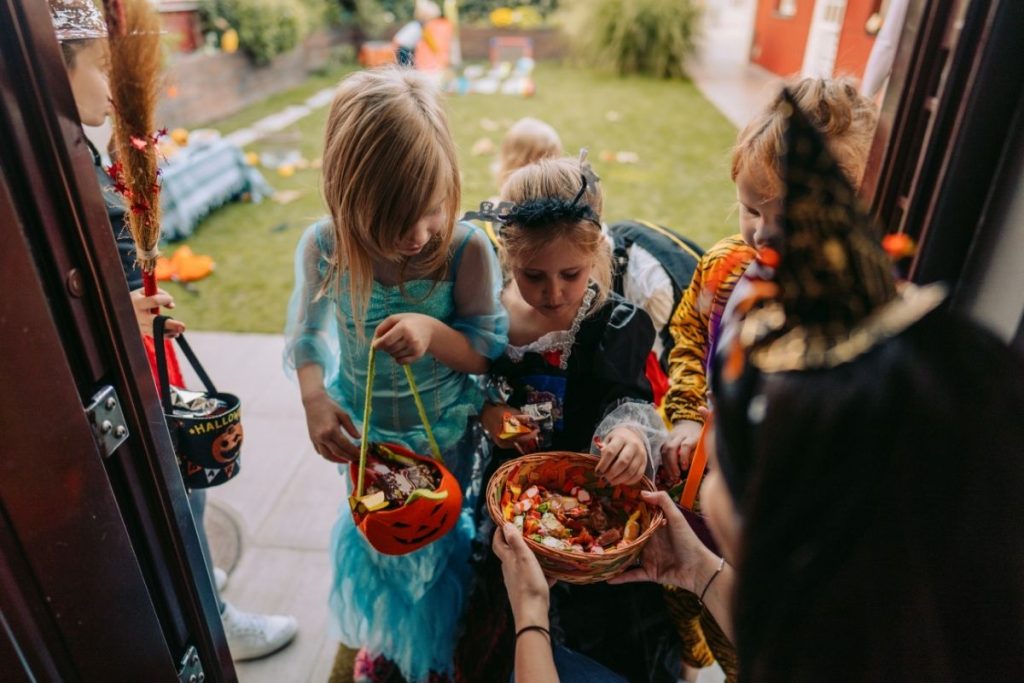
The exact roots of trick or treating can’t be traced to one exact past tradition, but perhaps linked to the practices of a few different ones.
One theory is that it was based on the practice of ‘soul-caking’ which was a catholic tradition in Ireland that did not gain much popularity at first when the Irish immigrated to the US. People would make sweet pastries and distribute those as well as other food to beggars who went door to door promising to pray for the souls of the dead in exchange for a meal on.
It is thought that some young people would take the opportunity and go door to door to receive the treats as well but instead of promising to pray for souls, would do some sort of trick such as sing a song, recite a poem or tell a joke to also receive an offering.
Before the candy manufacturers got their hands all over the holiday simple offerings such as fruit, nuts, and coins were given to children who later took up the practice on All Hallows Eve as families looked for ways to rekindle community, frivolity, and celebration in their lives after the great depression and World War II.
One other prominent theory is the link to Guy Fawkes Night a celebration that has occurred since the 1600s in Britain. Bon Fires are lit and children where typically known to wear masks and ask for pennies. This even occurs on November 5th.
Candy
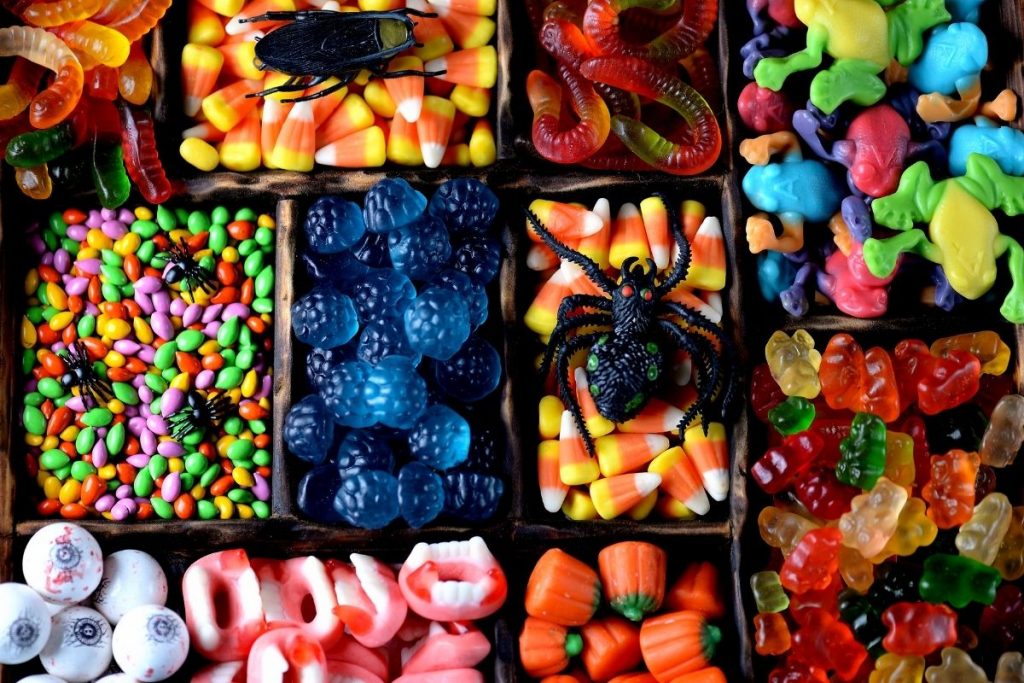
During Samhain, it was common for people to leave offerings such as treats for the spirits they believed still wandered the Earth. Even after the Christians took over in much of Ireland and Britain, the tradition of offering treats and food on All Hallows Eve and All Saints Day was one tradition that stuck around.
With the rise of trick or treating, candy and confectionary companies especially beginning in the 1950s took it as an opportunity to develop sweets and treats specially created for the event. Whether the confectionary itself was developed specifically for Halloween such as candied corn or that they began making more individually packaged treats, they ensured they marketed their products to be bought in large quantities for the holiday.
Full Moon
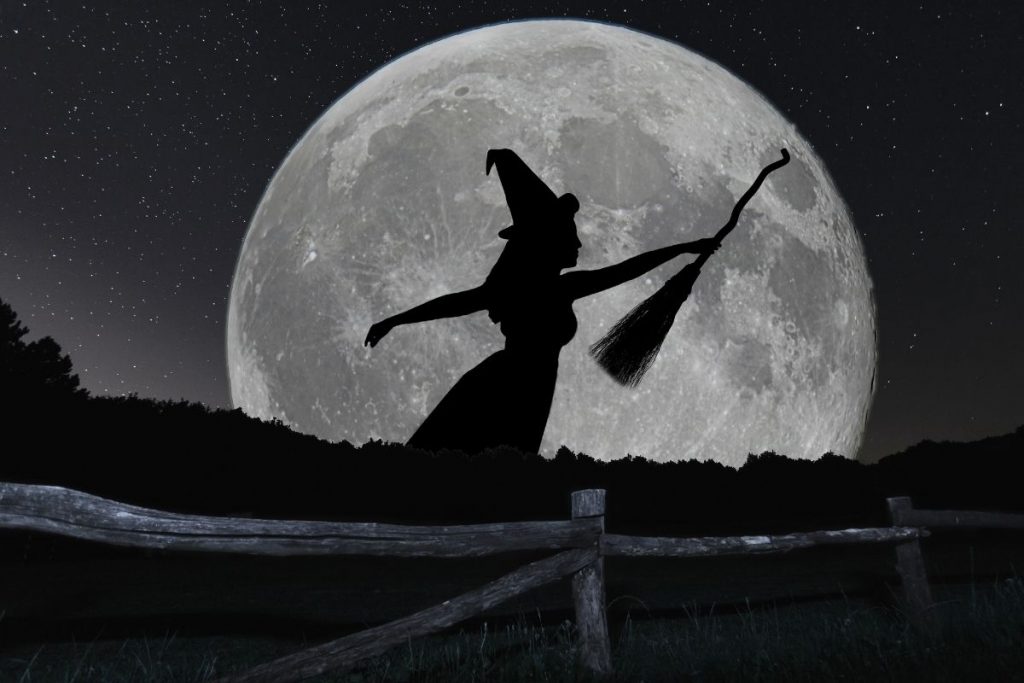
A full moon on Halloween is a rare occurrence which only happens every 18-19 years with the next occurring in 2020. A full moon represents death and rebirth and is a symbol of the night when it is most visible. The night of a full moon is a time when many rituals and superstitions prevail and so naturally a link would be made to Halloween. And as most Halloween images are created to look as though it is night time, the image of a moon reinforces this, especially a bright full and foreboding one.
Owl
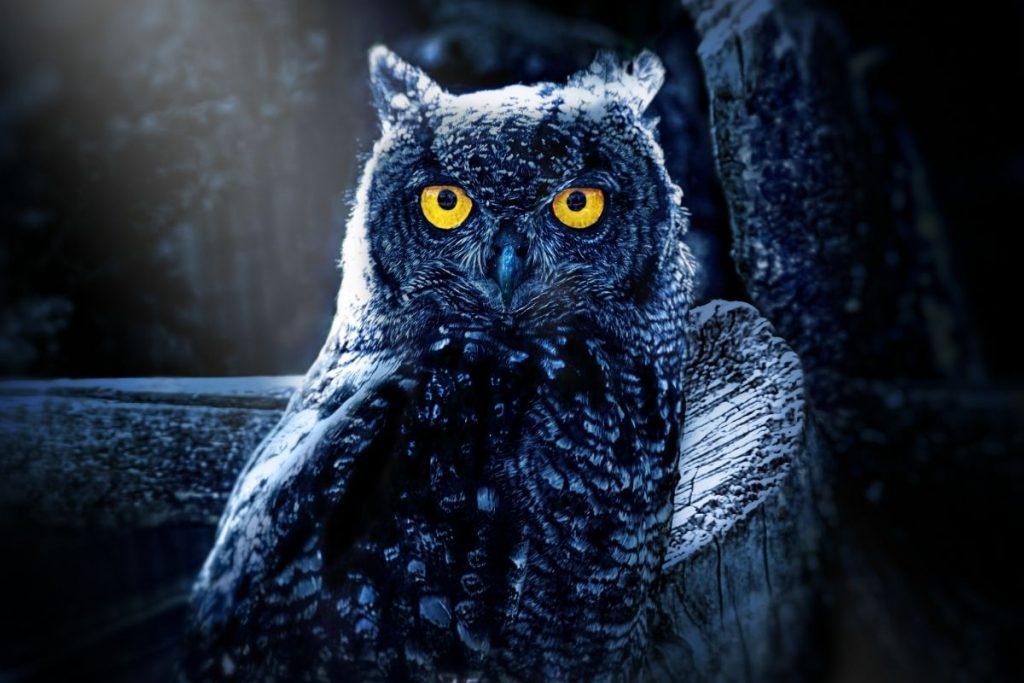
Owls have long been linked to many superstitions and symbols on this list, along with the fact that they are nocturnal animals and mainly observed at night also adds to their inclusion on this list.
One superstition is that owls are creatures that can live with ghosts, so if an owl is around then ghosts may be too. Other superstitions related to witches include that witches can turn themselves in owls, and that they were just like in Harry Potter the means of communication between the sorcerers and witches. It was also thought that if you heard an owl hooting, it was a signal that a witch was approaching.
Werewolves, Zombies, Vampires and Other Monsters
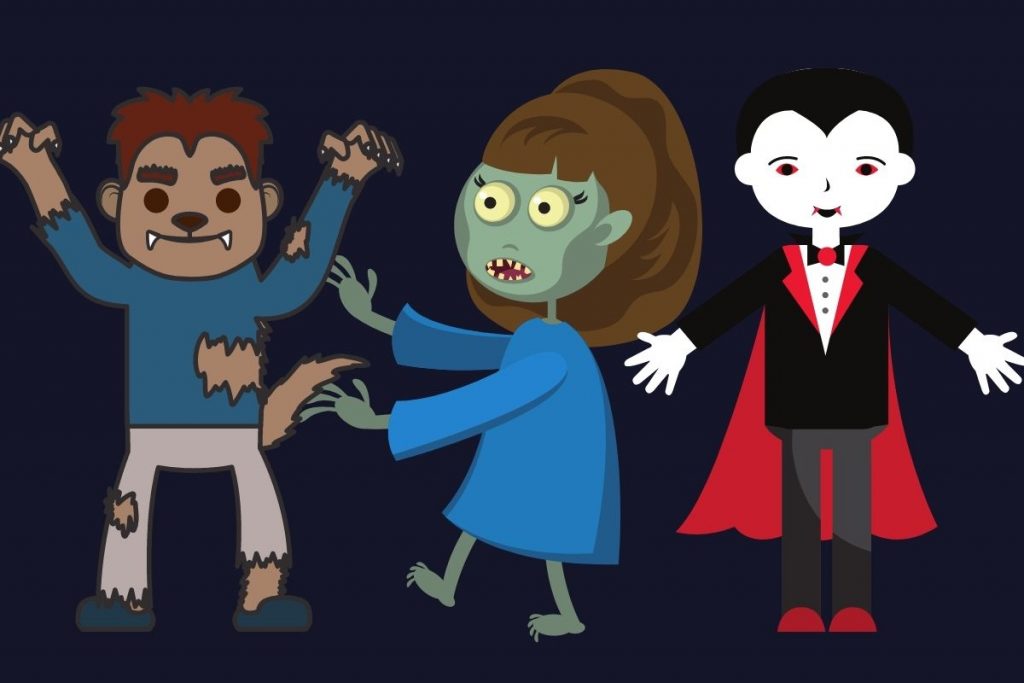
During Samhain, although they would not have known about the modern day monster depictions of werewolves, zombies and vampires, they would dress up in animal heads and skins to scare away ghosts and trick them into thinking they were dead like them. Today we dress like the scariest monsters we know of – those of modern horror and fiction.
Many of these modern-day monsters also have many connections to the other symbols on this list. Werewolves to the moon, zombies being the living dead and vampires to the night, bats, and blood.
Haunted Houses
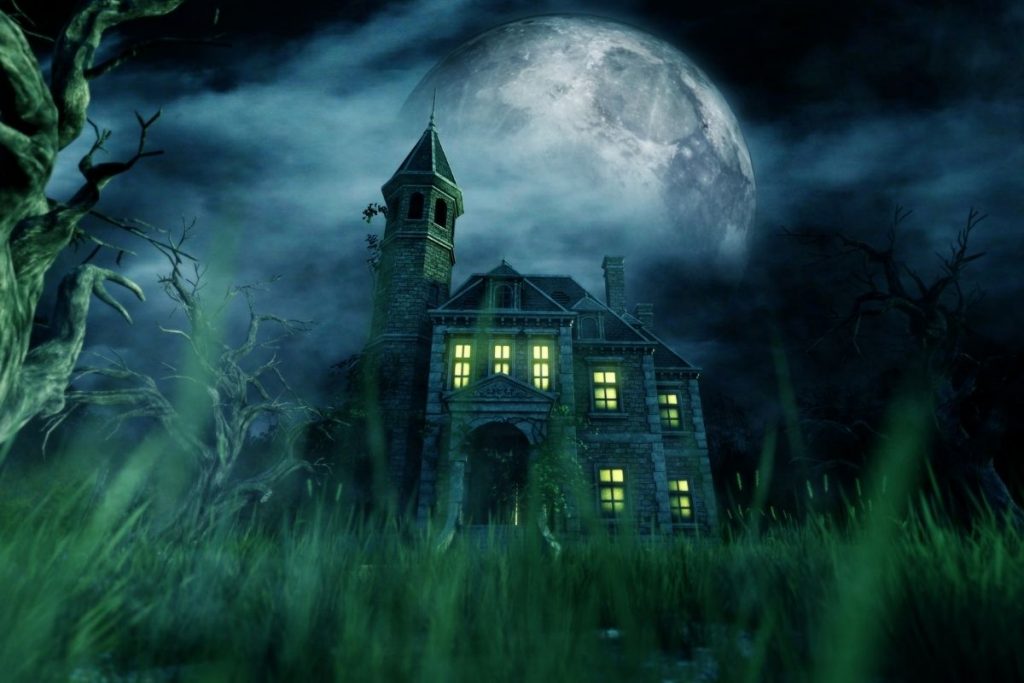
When buildings are left dormant long enough, stories about them usually run rife! Critters and animals begin to live within their walls, making noises that can be heard but not seen. Cobwebs and dust cover every inch and if an owl or group of bats happen to make the house their home, it only adds fuel to the fire of stories and links to superstitions that can be made.
In the early 1900s parents and communities began to create organized Halloween activities for their kids as over time the night had turned more into an evening of mischief where groups of boys would overturn cars and cut telephone poles leading to some members of the public wanting to ban the tradition altogether.
Haunted house tours and guides amongst other activities such as trick or treating and parties were a way to ensure the youth did not run amok and let off too much steam on the night that was once hailed as being a festival intended to scare away evil.
Cemetery & Graves
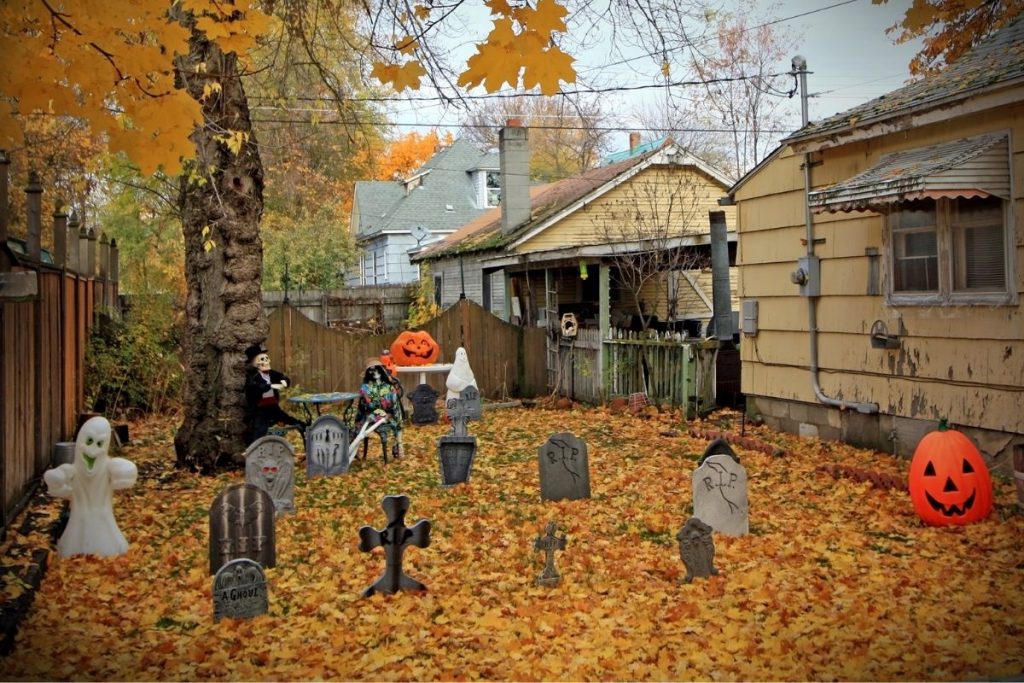
As the resting place for the dead, it is needless to say that Grave stones are also a common symbol used during Halloween.
Why are Orange and Black Halloween Colors?
The colors orange and black were never chosen intentionally as the colors of Halloween – although you might have someone at Hallmark say otherwise! Just as over time there are symbols that we have come to know as having deep connections to the Halloween Holiday, so have the colors orange and black.
Being an Autumnal holiday in the northern hemisphere, Halloween is celebrated during a time when leaves on trees are turning shades of amber and red, where fires are being lit to keep loved ones warm when pumpkins ripen, the harvest is ready and the evenings usually end with an orange glow as the sun marks it descent and the world moves from Summer to Winter. Orange is a color that represents all these things and overtime as fallen leaf wreaths and pumpkins have been used to decorate homes to welcome the change of seasons, so too has Halloween taken on the color to represent this time of change.
And with Halloween’s Celtic roots being the tradition of scaring off ghosts during the festival of Samhain, black the tone of darkness and death is used today to create that spooky and scary ambiance that sends a chill up your spine – scary enough to spook off any of the ghosts and ghouls you might encounter today.
It is also good to note that purple is often also used with both black and orange or just with black to also represent Halloween. Purple being a color of mystery and often associated with witches and potions is a perfect match for the holiday as well as for it’s aesthetic look being the direct opposing color of orange on the color wheel!
Related Educational Activities
Having been a teacher in Australia with a Bachelor of Education (Primary), I am always looking at ways to creatively teach children and regularly used dance and movement in my classroom to enforce learning of concepts and material we were learning about in different areas of the school curriculum.
The following are some links and connections that can be made from this creative dance lesson to other areas of learning!
Mathematics or Arithmetic

For this one, I really don’t want to reinvent the wheel! I would recommend you use a search engine to look up the term Halloween Math Activities and you will be surprised at the number of free resources available to you such as this bat counting activity from frogsandfairies.com
English and Literacy
- Work on onset and rime with _at words such as bat and cat.
- Create a spelling list of Halloween related words.
- Create a list of adjectives to describe Halloween or one or more of its symbols.
- Create a list of verbs to describe Halloween or one or more of its symbols.
- Recount a time you went trick or treating or celebrated Halloween.
- Write a scary or spooky story that includes one or more of the Halloween symbols.
- Research and then write a report about the history of Halloween or one of its symbols.
- Write an argumentative or persuasive essay expressing your position on candy being given at Halloween.
- Read books with Halloween themes.
Science
- Investigate scientifically the evidence that ghosts, vampires, or other monsters do or do not exist.
- Do one of the hundreds of science-themed experiments you can find on Pinterest.
Social Studies/History
- Develop charts, lists, or diagrams that show the differences in how Halloween is celebrated today and in the past.
- Research the history of Halloween and create a project, PowerPoint or essay to show your learnings.
- Investigate superstitions, myths, and legends surrounding the Halloween symbols.
- Look into and learn about the long and history of the witch.
- Research the differences between Halloween and Dia De Los Muertos. Look into the different cultures and people behind each celebration to help you define how the celebrations are similar and different.
- Create a timeline to show important changes and development in the history of Halloween.
Geography
- Mark on a map the various locations Halloween has been celebrated throughout history.
- Discover the territory of the Celtic people and mark this on a map.
- Look at where the Celts immigrated over time and where they took their traditions with them.
Recent Posts
Here at Move Dance Learn, we create dance videos for kids. We have so many to offer, but thought we would put together a list of our top ten dance tutorials for kids to make them easy for you to find...
Here at Move Dance Learn, we create dance videos for toddlers, preschoolers and kindergartners. We have so many to offer, but thought we would put together a list of our top ten dance videos for...
